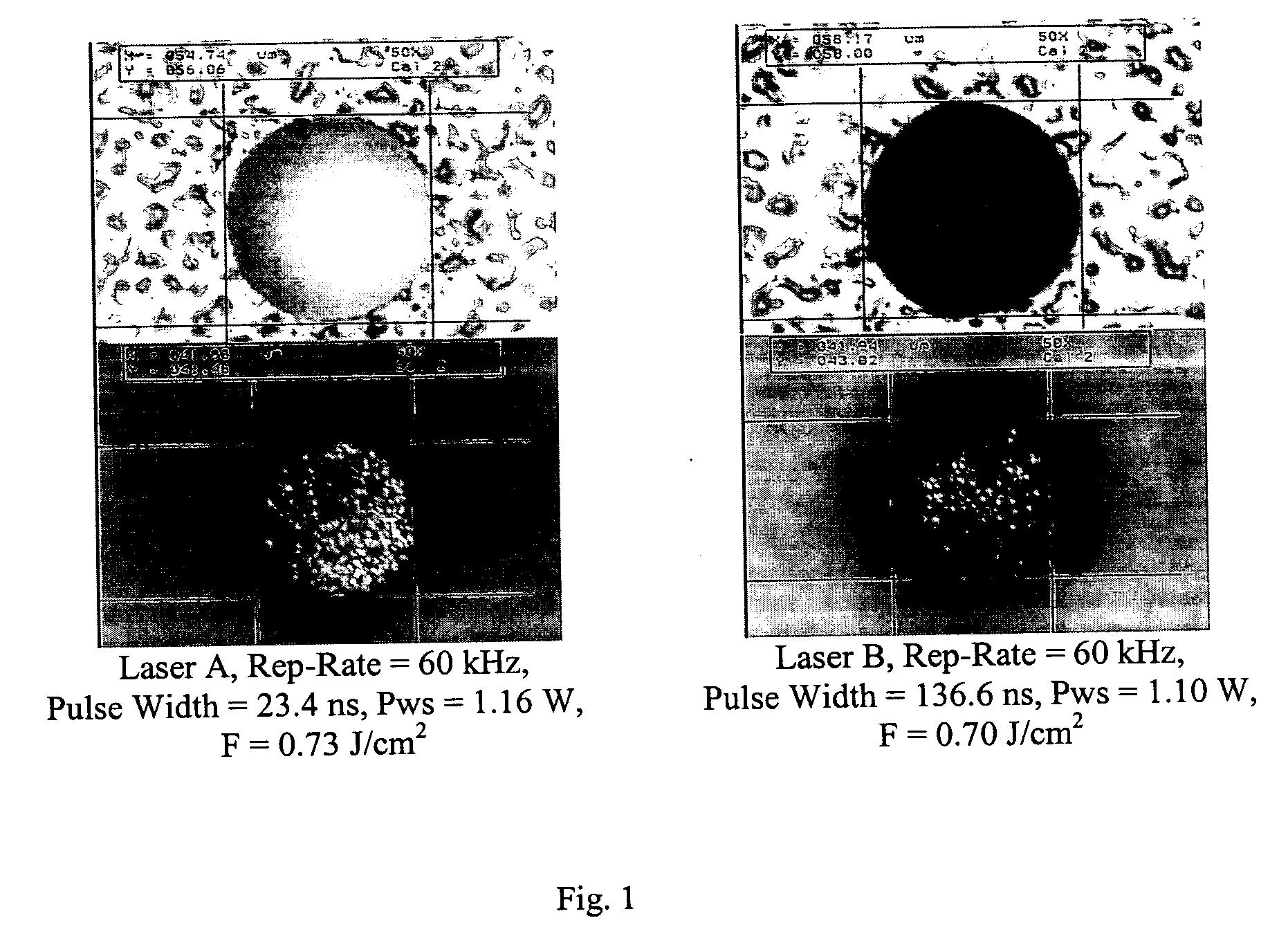Method of providing consistent quality of target material removal by lasers having different output performance characteristics
a laser and output performance technology, applied in the field of providing consistent quality of target material removal by lasers having different output performance characteristics, can solve the problems of short-term transients, differences in drilled via quality, and imperfect control of pulse energy
- Summary
- Abstract
- Description
- Claims
- Application Information
AI Technical Summary
Benefits of technology
Problems solved by technology
Method used
Image
Examples
Embodiment Construction
[0016] Preferred embodiments of this invention entail the use of a solid state UV laser to perform via drilling and ablation of electronic circuit materials such as homogenous films, particulate filled resins, polyimides, and fiber-reinforced polymers, either with or without metal cladding. The Model ABF circuit board dielectric material manufactured by Ajinomoto Fine-Techno Co., Inc., Kawasaki, Japan is the target material on which the following descriptions are based. The following descriptions are directed to via drilling, but the invention is also applicable to other methods of material removal, such as link severing, material trimming, annealing, and scribing.
[0017]FIG. 1 is a set of four photographs of microscope images that illustrate the problem solved by the invention. FIG. 1 shows light microscope pictures of two 58 μm diameter vias drilled to depths of 35 μm-40μm at approximately the same fluence level with 355 nm UV lasers having different pulse widths. The top two phot...
PUM
| Property | Measurement | Unit |
|---|---|---|
| Width | aaaaa | aaaaa |
| Energy | aaaaa | aaaaa |
| Pulsed sound | aaaaa | aaaaa |
Abstract
Description
Claims
Application Information
 Login to View More
Login to View More - R&D
- Intellectual Property
- Life Sciences
- Materials
- Tech Scout
- Unparalleled Data Quality
- Higher Quality Content
- 60% Fewer Hallucinations
Browse by: Latest US Patents, China's latest patents, Technical Efficacy Thesaurus, Application Domain, Technology Topic, Popular Technical Reports.
© 2025 PatSnap. All rights reserved.Legal|Privacy policy|Modern Slavery Act Transparency Statement|Sitemap|About US| Contact US: help@patsnap.com



